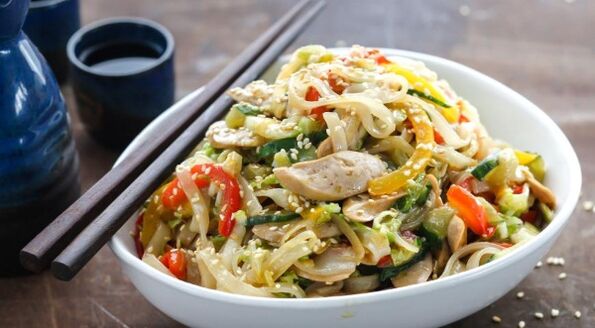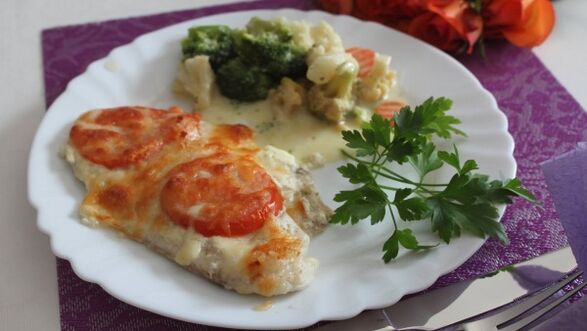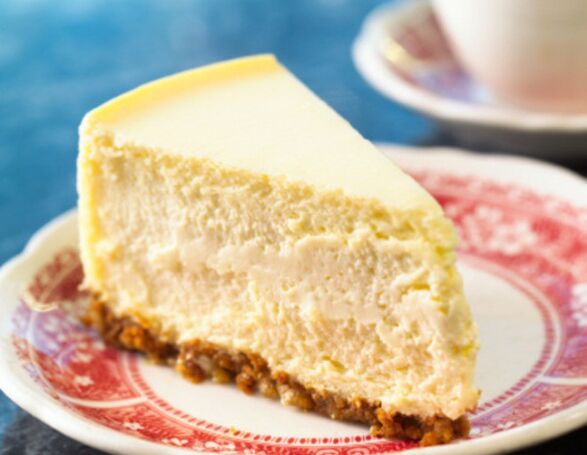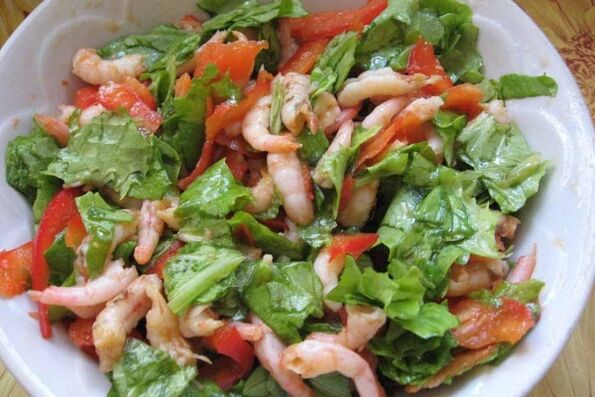The list of gluten-free dietary products is gaining more and more popularity. What is its essence, why it is so useful and what results it gives, we need to understand in more detail.
What is gluten?
Gluten is a sticky protein substance found in grains. Thanks to the sticky properties, bread has elasticity, and various sauces and margarine have a creamy texture. Makes bread and all baked goods soft, airy and spongy. In production, it is used as a stabilizing substance.
The essence of a gluten-free diet
The point is simple: you should avoid eating foods that contain gluten. This is done to clean the body, to restore the digestive system and its normal functioning.
Giving up gluten leads to positive changes within a week.
Who is this diet recommended for?
It is mainly used for various diseases. First of all, doctors recommend this diet for people with celiac disease. Simply put, this is an individual intolerance to gluten, which is most often expressed by allergic reactions.
For the diseases of autism, schizophrenia and Down syndrome, this diet is also indicated. Research shows that any change in genes and their excessive amount can disrupt the functioning of the body.
With changes in the genes of this type, the peptides produced during the breakdown of gluten are not digested. In the body, it is able to affect the organs of the nervous system. The person may have epileptic seizures and developmental delays.
On the other hand, gluten-free food is necessary for:
- bronchial asthma;
- Parkinson's disease;
- diabetes mellitus;
- autoimmune hepatitis;
- obesity;
- atherosclerosis;
- allergy to vegetable proteins;
- psoriasis;
- frequent migraines;
- chronic constipation.
Regular consumption of gluten can be harmful even for a healthy person.
benefit
Gluten is not only harmful, but also useful:
- fills with energy;
- binds vitamins and trace elements;
- increases hemoglobin;
- strengthens the immune and skeletal system;
- helps in faster absorption of vitamins in the body;
- normalizes intestinal function;
- recovers quickly after prolonged illnesses and operations.
Advantages and disadvantages
A gluten-free diet (list of products later in the article) has many advantages. The body receives the most useful substances from vegetables, fruits and meat if you adhere to this diet.
| strengths | Shortcomings |
|---|---|
|
|
Eating gluten-free foods helps manage celiac disease and gluten intolerance. It is also a great way to combat intestinal upset and reduce the risk of diabetes and cancer.
Gluten-free diet for weight loss
Gluten is a sticky protein that does not dissolve in water. It begins to be deposited on the back walls of the organs, forming fatty layers in the body. There is an accumulation of waste and toxins. Excess pounds appear.
Experts often recommend this type of diet for weight loss. It is most often recommended for people who are obese. Avoiding foods containing gluten helps to clean the gastrointestinal tract, improve intestinal motility and speed up metabolism.
This dietary arrangement gives good results in weight loss. This happens by eliminating any sweet food, fast food, pasta. If a person does not suffer from celiac disease or individual gluten intolerance, then it is not necessary to completely exclude gluten-free products.
A gluten-free diet (list of products later in the article) has a number of characteristics:
- increases hair growth, strengthens them;
- reduces various skin rashes, unevenness, roughness;
- improves the general condition of a person;
- increases performance;
- reduces weight;
- normalizes metabolic processes;
- it keeps you feeling full for a long time.

A diet with an almost complete exclusion of gluten is considered the most correct.
But its absence means a lack of vitamins:
- group B;
- D;
- calcium;
- gland;
- some minerals.
Therefore, it is important to create a menu so that there is no lack of vitamins. To do this, you need to take multivitamins.
Gluten-free diet for children
Celiac disease causes a lot of concern, especially for young children. When ingested, gluten actively irritates the intestinal walls. It causes bloating, gases, diarrhea, constipation, redness in the body, as well as weakens the immune system. To avoid this, you should choose a gluten-free menu.
A gluten-free diet (list of products below) allows the use of:
- fresh and boiled vegetables/fruits;
- eggs of all birds;
- nuts and seeds;
- legumes;
- fresh meat/fish, without added marinade;
- seafood;
- dairy products;
- gluten-free baked goods/bread;
- compote, fruit drinks, cocoa, tea;
- flower honey/linden;
- not all types of grains.
Excluding cereals from the diet leads to a lack of carbohydrates in the child. To prevent this from happening, it is important to diversify the menu with legumes, potatoes and eat a lot of vegetables and fruits.
Allowed grains:
- Buckwheat
- corn
- RICE
- millet
- Tapioca
- Soy
Parents should adhere to the following recommendations:
- It is best to keep gluten-free products in a specially designated compartment of the cabinet;
- A special paring knife must be used;
- Be sure to wash your hands when preparing food for your baby at the same time as regular food;
- Use separate plates;
- Keep harmful products out of reach of children;
- The product should not be given to a child if its gluten content is questionable.

Allowed and prohibited products
A gluten-free diet includes a list of products that will help you create the most balanced menu so that there is no shortage of essential substances for the body. Gluten can be replaced with different products. And food can be changed with different recipes.
The body gets trace elements from cereals, vitamin B from meat, fish and eggs. If you need minced meat to prepare any dish, then you should prepare it yourself from meat at home. Store-bought ground beef may contain wheat flour, bread and chemical additives. It will be beneficial to constantly eat vegetables and fruits.
| Healthy food | Harmful products |
|---|---|
|
|
Prohibited foods contain a lot of gluten.
This diet prohibits taking certain tablet medications.
Prohibited food additives
When following a gluten-free diet, the following food additives must be excluded:
- E160 - carotene, color;
- E150 – sugar color (caramel);
- E150c - ammonia caramel;
- E150d – ammonium sulfate caramel (food coloring);
- E411 – oat gum (used in the cosmetics industry);
- E636 – maltol (confectionery products);
- E471 – stabilizer (used to extend the shelf life of products);
- E953 – isomalt (added to baked meats, jams, chocolate, chewing gum, ice cream);
- E965 – maltitol (added to candy, chocolate, chewing gum).
What foods can you include in a gluten-free diet?
This diet is healthy, varied and contains delicious dishes:
- soup with vegetable/meat broth;
- porridge;
- gluten-free baked goods;
- fruit puree/salad;
- vegetable stew;
- meatballs, kittens;
- cottage cheese with any fruit;
- pan;
- scrambled eggs, omelets, boiled eggs.
Weekly menu for a gluten-free diet
Gluten-free diet (the list of foods allowed and prohibited for consumption is given above)can be represented by this menu option:
| Day of the week no. 1 |
|
| Day of the week no. 2 |
|
| Day of the week no. 3 |
|
| Day of the week no. 4 |
|
| Day of the week no. 5 |
|
| Day of the week no. 6 |
|
| Day of the week no. 7 |
|
Gluten-free diet for diabetes
People with diabetes are encouraged to eat gluten-free foods, but not all.Not all gluten-free foods have an appropriate glycemic index.For example, people with diabetes are advised to eat oats, as its glycemic index is suitable for maintaining the required level of blood sugar.
With the help of properly selected food, the body receives all the necessary minerals and vitamins. Including gluten-free foods in your daily diet helps maintain health.
Sometimes gluten affects the intestines of patients. The doctor then introduces gluten-free foods into the diet to provide all the nutrients for the required functioning.
The dangers of a gluten-free diet
The dangers of this diet are:
- lack of vitamins B and D;
- poor absorption of vitamins.
Because of this, weakness, apathy and lack of concentration may appear.
Contraindications
You should not adhere to such a diet if:
- pregnancy;
- anorexia;
- acute and chronic diseases;
- postoperative period;
- menopause;
- hormonal changes;
- endocrine diseases;
- heart dissases.
Gluten intolerance can only be detected by doing a blood test. This type of food should be chosen by a doctor.
First course recipes for a gluten-free diet
Noodles with vegetables
Required:
- tomatoes - 3-4 pieces;
- bell pepper - 2 pieces;
- lamp;
- ½ carrot;
- rice noodles;
- chicken broth.

Cooking method:
- Wash and chop the vegetables.
- Boil the liquid.
- Add vegetables, cook for 10 minutes.
- Add noodles, cook until fully cooked.
- Salt to taste.
Mushroom soup
Required:
- mushrooms - 0. 5 kg;
- ½ carrot;
- lamp;
- potatoes - 2-3 pieces.
Cooking method:
- Wash the mushrooms and chop.
- Boil water in a pot.
- Add mushrooms.
- Cut the carrots, onions, potatoes. Add to pan.
- Salt to taste.
- Cook the soup until completely cooked.
Second courses
Fish in French
Required:
- tilapia/pangasius fillet - 1 kg;
- tomatoes - 5 pieces;
- lamp;
- eggs - 7-8 pieces;
- bell pepper - 2 pieces;
- potatoes - 5 pieces;
- milk/cream – 0. 5 l;
- cheese;
- salt.

Cooking method:
- Thaw the fish, wash and cut. Fill the entire pan with it.
- Wash and chop the vegetables.
- In the second layer we put the tomatoes, in the third the peppers, in the fourth the onions, in the fifth the potatoes.
- Mix the eggs with the cream/milk and add salt. Fill everything.
- Salt to taste.
- Bake in the oven for 40-50 minutes until fully cooked.
- At the end, we sprinkle them with cheese.
Stew with vegetables
Required:
- zucchini - 2 pieces;
- eggplant - 2 pieces;
- tomatoes - 3-4 pieces;
- ½ onion;
- bell pepper - 3 pieces;
- homemade tomato - 100 ml;
- salt.
Cooking method:
- Wash the vegetables.
- Cut them into cubes.
- Pour into a hot pan. Fry for 15-20 minutes.
- Throw in the tomato. Cook another 20 minutes.
- Salt to taste.
dessert
Casserole without wheat flour
It will be needed:
- cottage cheese - 800 gr;
- sugar - 1 cup;
- eggs - 3 pieces;
- potato starch - 2 tablespoons. l. ;
- salt.

Cooking method:
- Add an egg to the curd. Beat until smooth.
- Break 2 eggs, separate the yolks from the whites.
- Pour the sugar (half a glass) into the bowl with the yolks. Beat it.
- Beat the egg whites until they form fluffy peaks. Add salt.
- Add the yolks to the curd. Add the remaining sugar and potato starch. Beat it.
- Discard the whites. Mix everything.
- Pour the batter into a greased mold.
- Bake for 30-40 minutes at 180 degrees.
Waffles
You will need:
- eggs - 4 pieces;
- rice flour - 125 g;
- corn flour - 125 g;
- sunflower oil - 150 ml;
- water - 150 ml;
- salt;
- container with high sides.
Cooking method:
- Crack the eggs into a bowl. Blend until frothy.
- Add salt, rice flour. Mix it up.
- Add cornmeal. Beat it.
- Carefully pour oil and water. Mix it up.
- Bake.
- It can be served with honey, jam or salt.
Salads
Salad with mushrooms and meat
Mandatory:
- mushrooms - 500 gr;
- chicken meat (breast) - 200 g;
- lettuce leaves - 6-7 pieces;
- crackers - 100 g;
- cheese - 100 g;
- sour cream - 1 tablespoon. l.

Cooking method:
- Wash and chop the mushrooms. Fry.
- Fry the chicken, add salt.
- Cut the lettuce and cheese.
- Prepare crackers. Add to salad.
- Add all the ingredients to a bowl, mix with sour cream and salt.
Seafood salad
Required:
- mussels - 100 gr;
- sirtaki - 100 gr;
- tomatoes - 3-4 pieces;
- lemon juice;
- salt;
- olive oil - 1 tablespoon. spoon.

Cooking method:
- Place the mussels in a salad bowl.
- Cut sirtaki into cubes.
- Wash the tomatoes and cut them into cubes.
- Add salt, lemon juice, season with olive oil.
Diet price
On average, the price of a weekly menu starts at $30. All the ingredients can be bought in regular supermarkets. There are also shops for prepared gluten-free products. They cost many times more there. Therefore, it will be more economical to cook all the food at home.
results
Weight loss from this diet occurs within a week. You can lose 3 kg. Manifestation of allergic reactions decreases within 2 weeks. The intestines are completely cleaned and return to normal after 1-1. 5 months.
evaluations
This diet has a positive effect on health.
People who have tried this diet are satisfied with the results:
- the intestines are cleansed;
- chronic diseases go away;
- tenderness appears;
- weight decreases;
- skin condition improves;
- the risk of allergic reactions decreases.
The gluten-free diet has rightly gained its popularity. It is very useful for the body and gives many positive results, and thanks to the wide list of products, you can create not only a healthy but also a tasty menu.

































